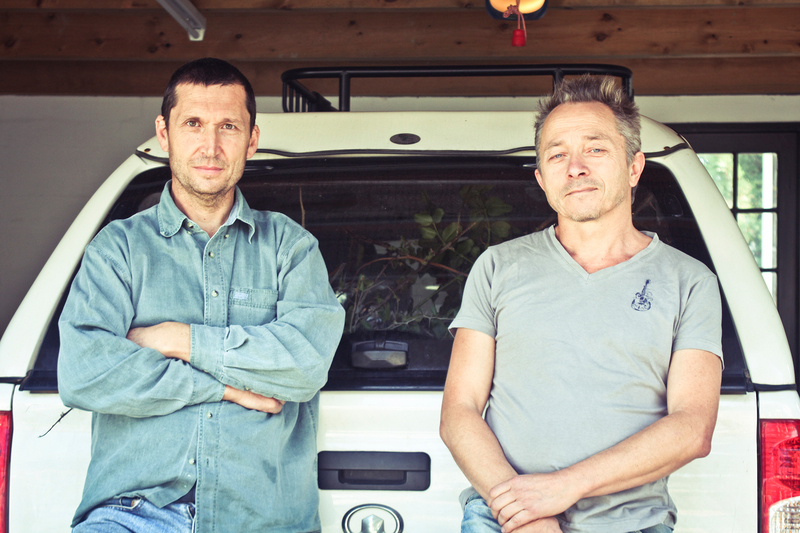Fear and anxiety in the social brain
13 May 2013
Research lead by Professor Jack van Honk (Department of Psychiatry and Mental Health) and Dr Barak Morgan (Department of Human Biology) is revealing new facts about the role of the amygdala, or the 'social brain', in an array of social behaviours - and especially its role in fear and anxiety disorders.
A recent paper in Translational Psychiatry, an open-access journal published by the Nature Publishing Group, has described their work on a small group of patients with Urbach-Wiethe Disease, an extremely rare genetic development disorder.
Typically, these patients have bilateral damage (lesions) to the basolateral amygdala, which have been linked to abnormalities in innate fear responses.
The patients - five women - are from a previously described Urbach-Wiethe Disease cohort stemming from a small 'founder' population in Namaqualand. Startlingly, this region is home to 40% of the world's approximately 100 reported cases of Urbach-Wiethe Disease.
Externally, symptoms vary but include a hoarse voice, lesions and scarring on the skin which tends to be wrinkly, and beading of the papules around the eyes. These result from a thickening of the skin and mucous membranes. Internally, there is calcification of brain tissue which can lead to epilepsy and neuropsychiatric disorders. The disease, however, is not life-threatening.
The gene can be traced to German immigrant Jacob Cloete, who arrived in Southern Africa in 1652. He settled in the Northern Cape and married into a Dutch family. Urbach-Wiethe Disease is now found in people of Dutch, German and Khoisan ancestry; and the high frequency is due to the 'founder' effect, when a small number of migrants settle far from home, resulting in a loss of genetic variation.
With colleagues from UCT's Department of Psychiatry and collaborators from the Netherlands, the UCT researchers have been working with the Northern Cape group since 2007. The project is part of UCT's Brain Behaviour Initiative (BBI), a UCT Signature Theme, and also part of the Cross-University Brain Behaviour Initiative (CUBBI).
The amygdalae are the almond-shaped groups of nuclei deep in the temporal lobes of the brain and play an important role in the 'social brain'. This affects key psychological processes, for instance processing emotional memories and emotional reactions - such as social threat, empathy and fear conditioning, and even altruism and trust.
Importantly, the amygdalae play a pivotal role in expressing innate fear responses triggered by appropriate stimuli; such as a dog with bared teeth, or a fearful human face.
Using a multimodal research strategy that incorporates structural and functional magnetic resonance imaging, as well as eye-tracking and behavioural assessments, the group showed that the five women are in fact hypervigilant for fearful expressions. In other words, they show exaggerated fear responses. This contrasts with a single case from America who has complete amygdala damage and a profound lack of fear responses to fearful faces.
Their findings have important implications for the understanding of the basolateral amygdala's role in fear and anxiety disorders. The development comes on the back of recent advances in magnetic resonance scanning, which allowed Van Honk and his team to study and 'dissect' the amygdala at a sub-regional level, and to map reactions in this part of the brain.
"For the first time we saw the selective damage to the specific sub-region of the basolateral amygdala in the scans," said Van Honk. What can also be seen is the activation of the other amygdala sub-nuclei during fear responses. "The pictures we have are unique," he added.
The team will use this work to prepare a model of the brain, showing how the amygdala functions and how it works with other parts of the brain. It's work that Van Honk - UCT's newest National Research Foundation A-rated scholar - believes has put South Africa on the global human neuroscience map.
"Cultural neuroscience holds promise for South Africa, given the genuine cultural diversity of the population and the modern neuroimaging infrastructure in Cape Town."
The team is part of a study to show how the amygdala functions with other parts of the brain and its role in reward, profit/loss calculations, altruism and trust, and in other neuroeconomic factors that are part of economic decision-making. This work has been published in PNAS.
 This work is licensed under a Creative Commons Attribution-NoDerivatives 4.0 International License.
This work is licensed under a Creative Commons Attribution-NoDerivatives 4.0 International License.
Please view the republishing articles page for more information.









